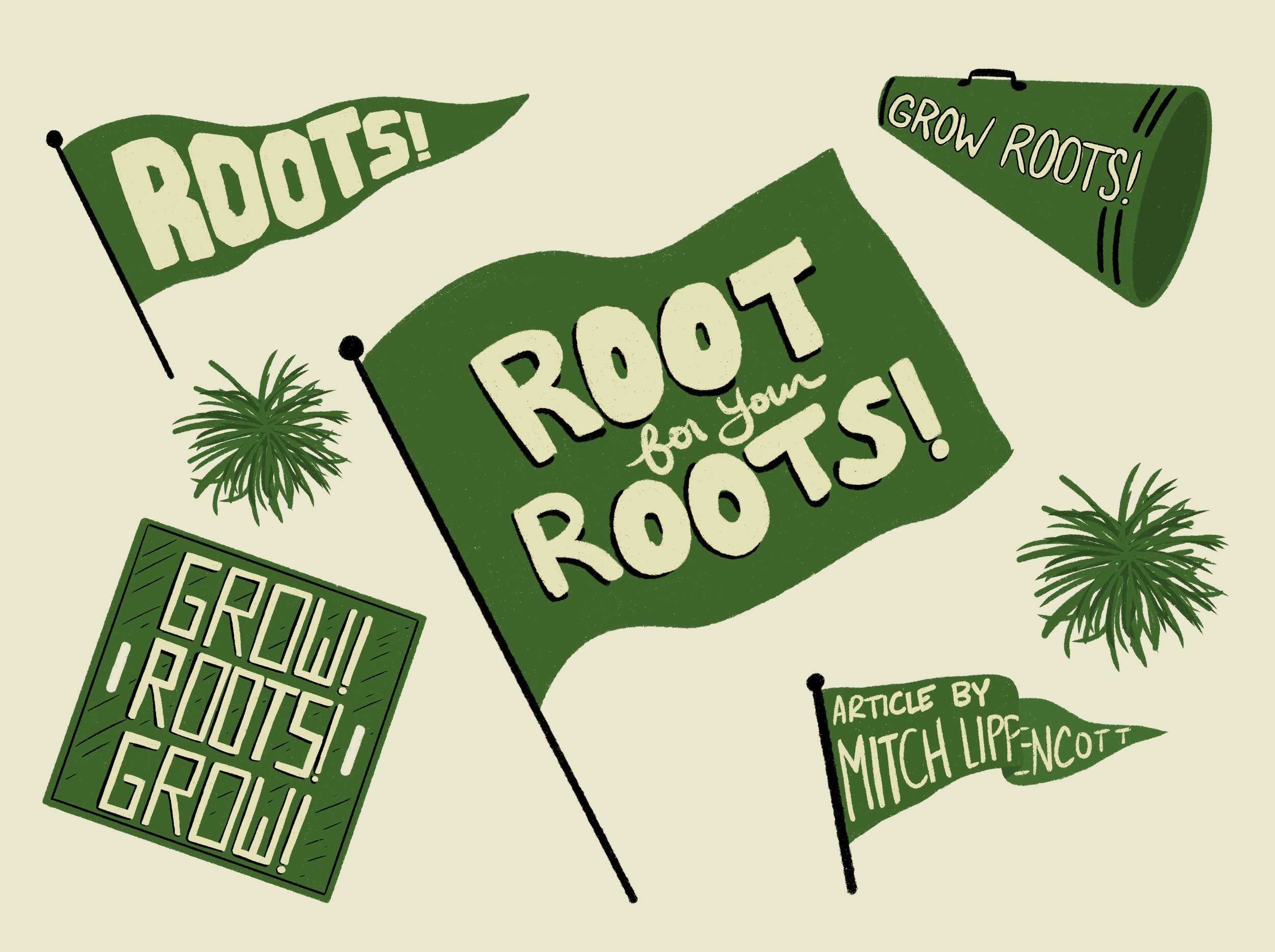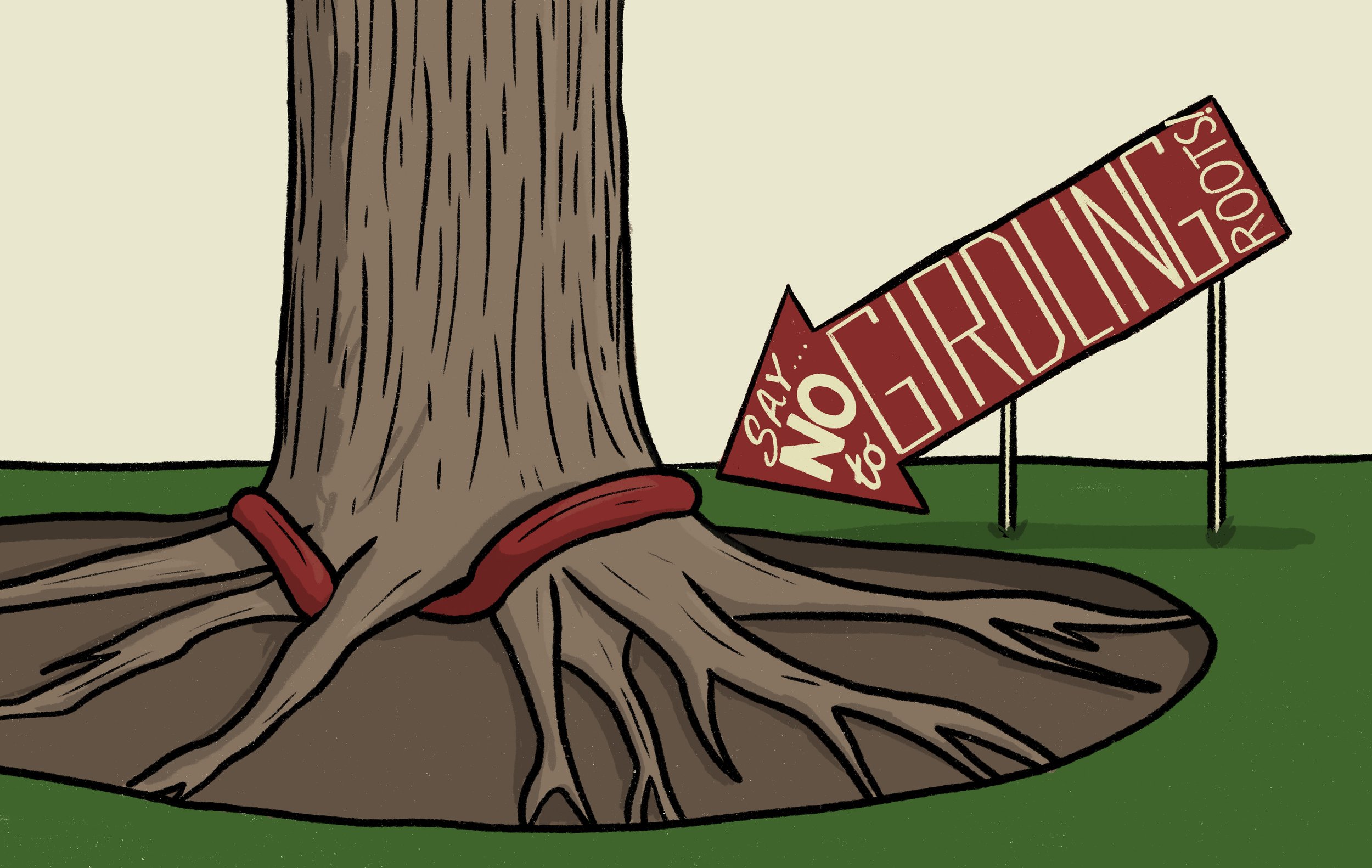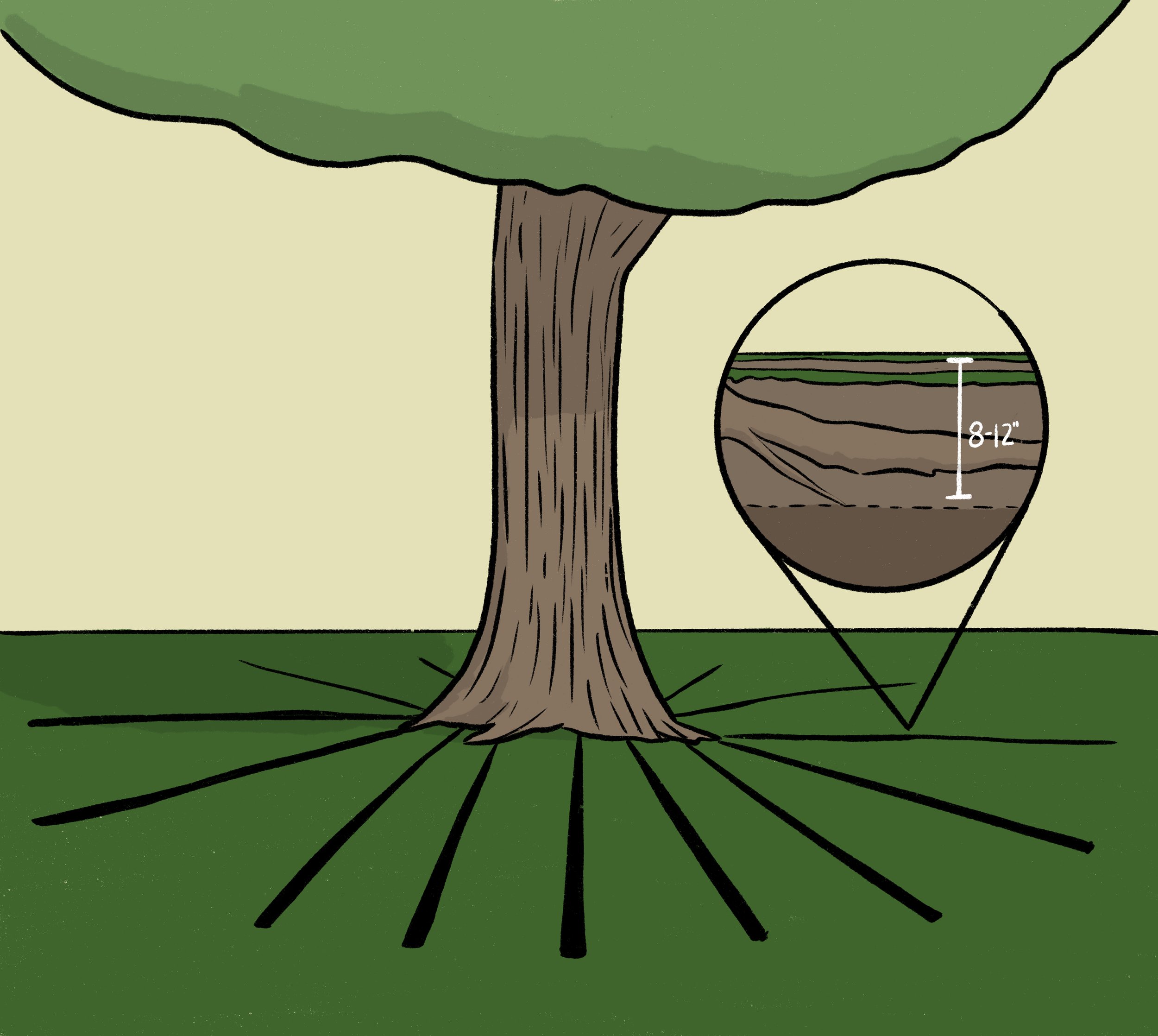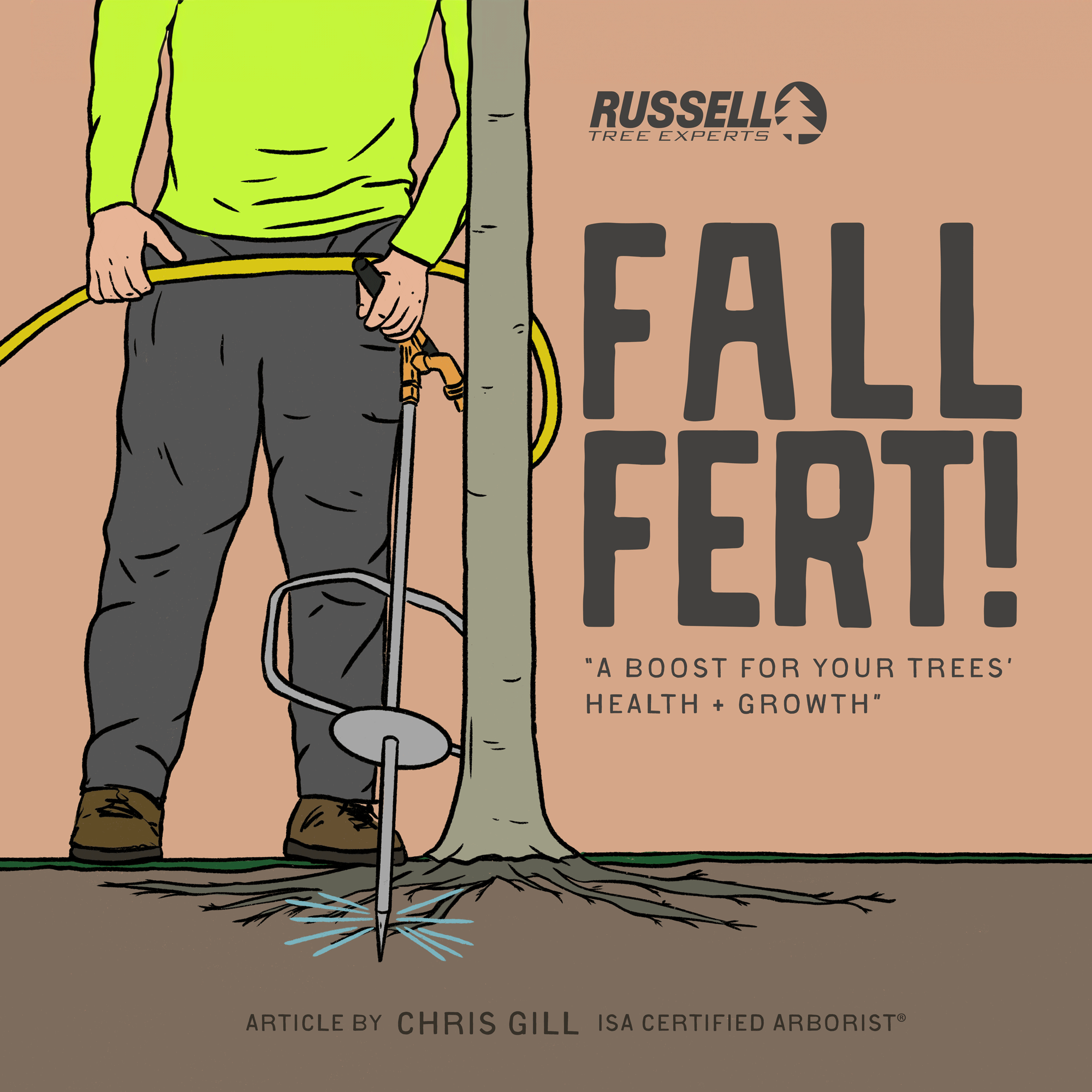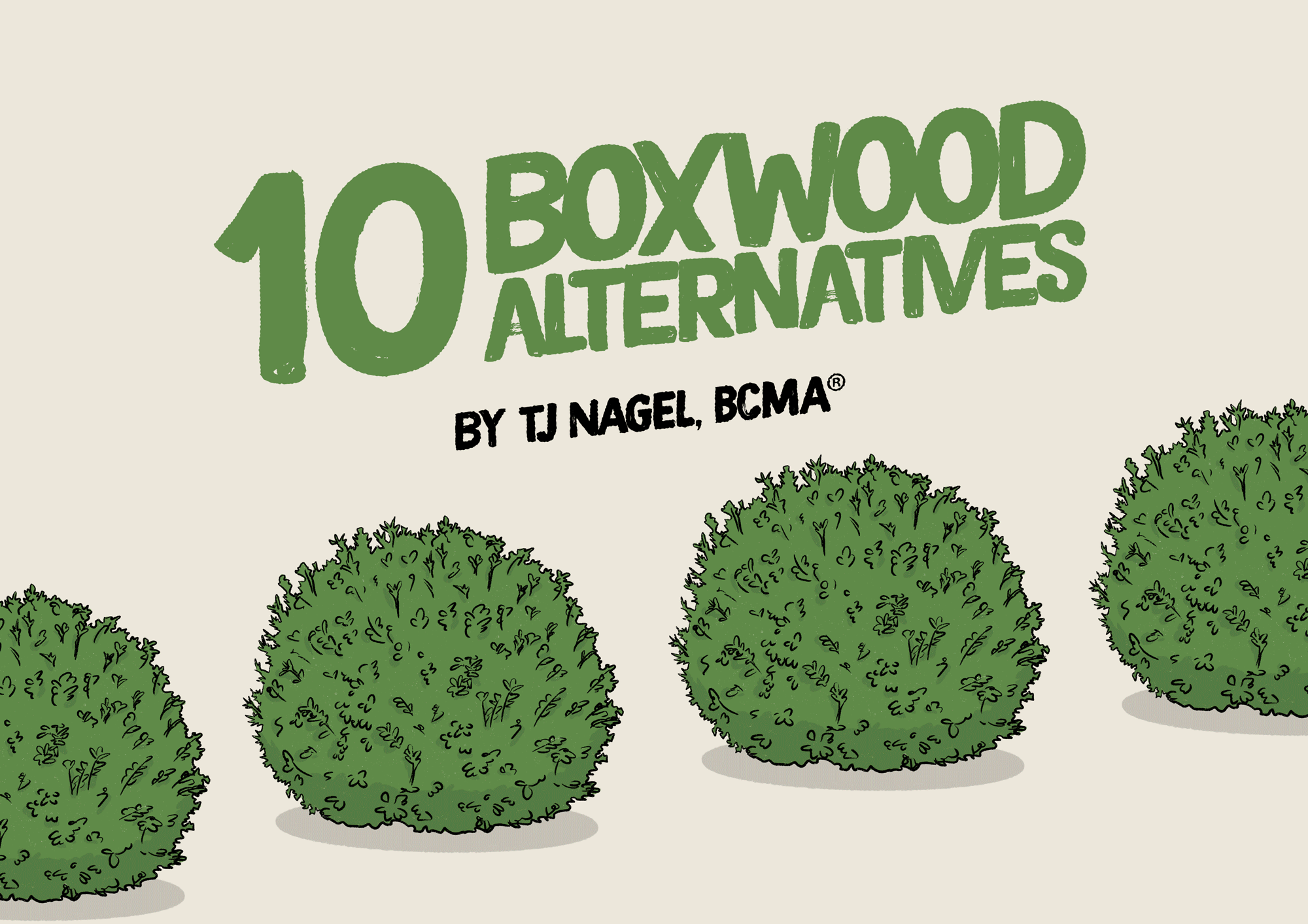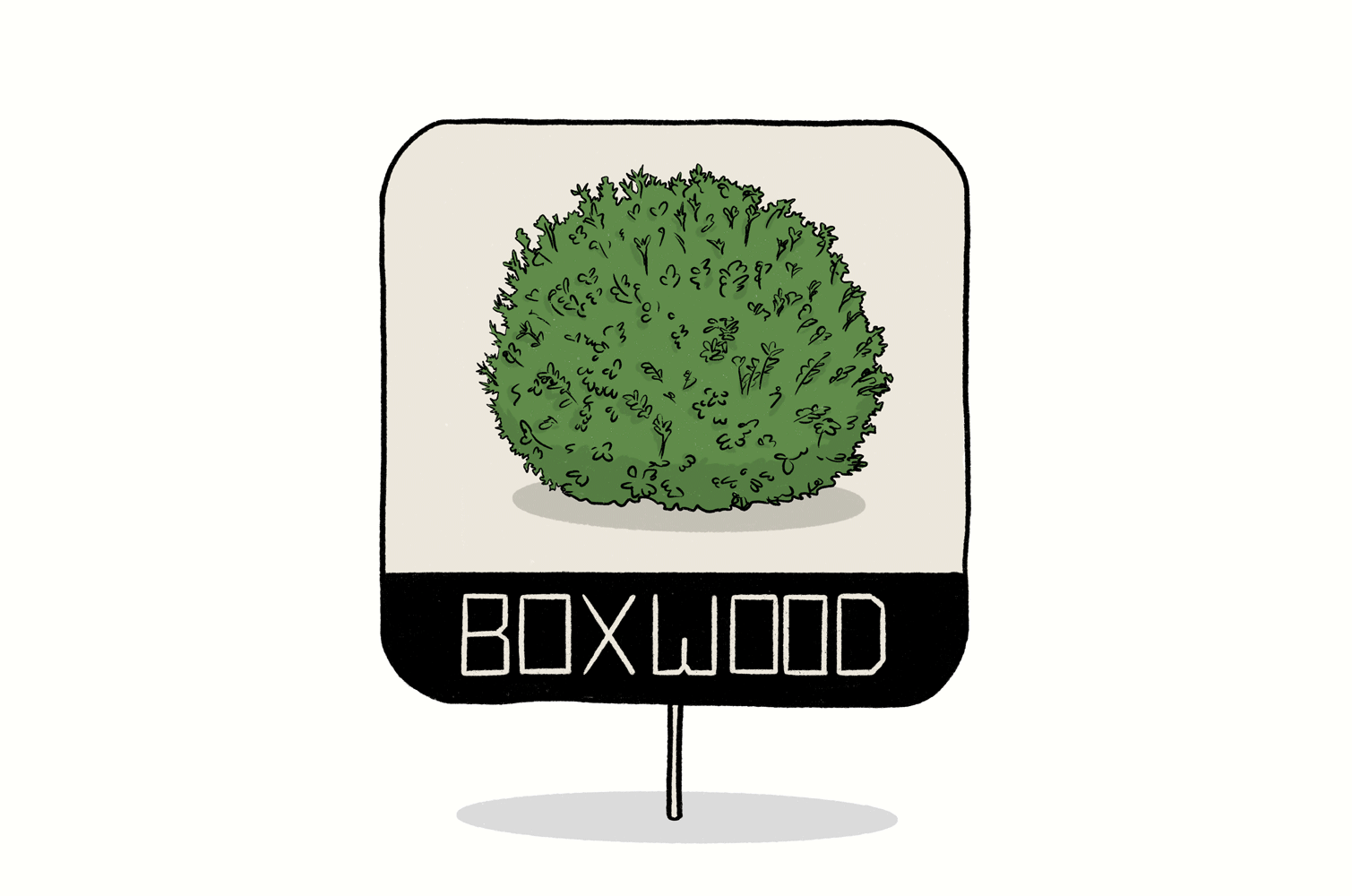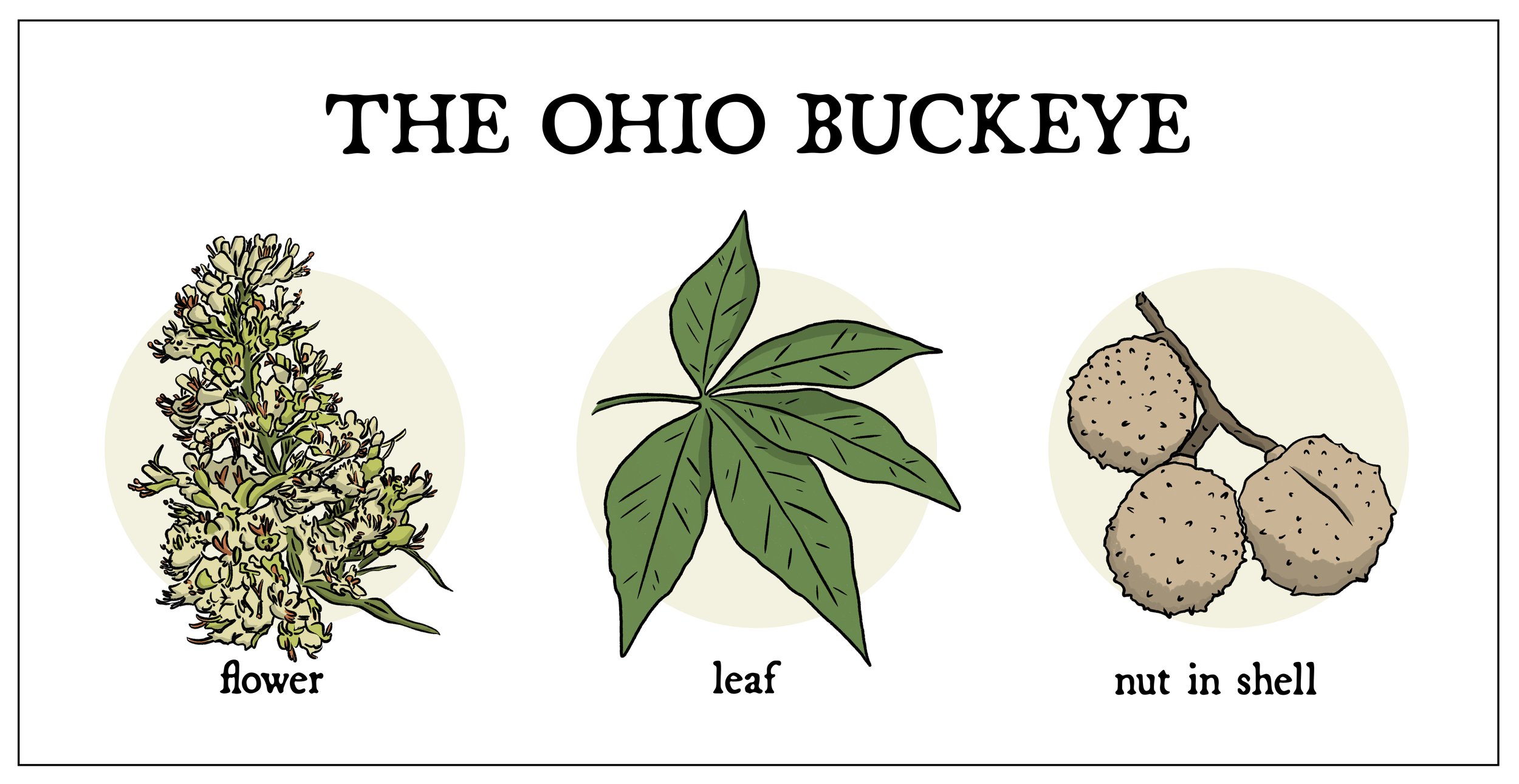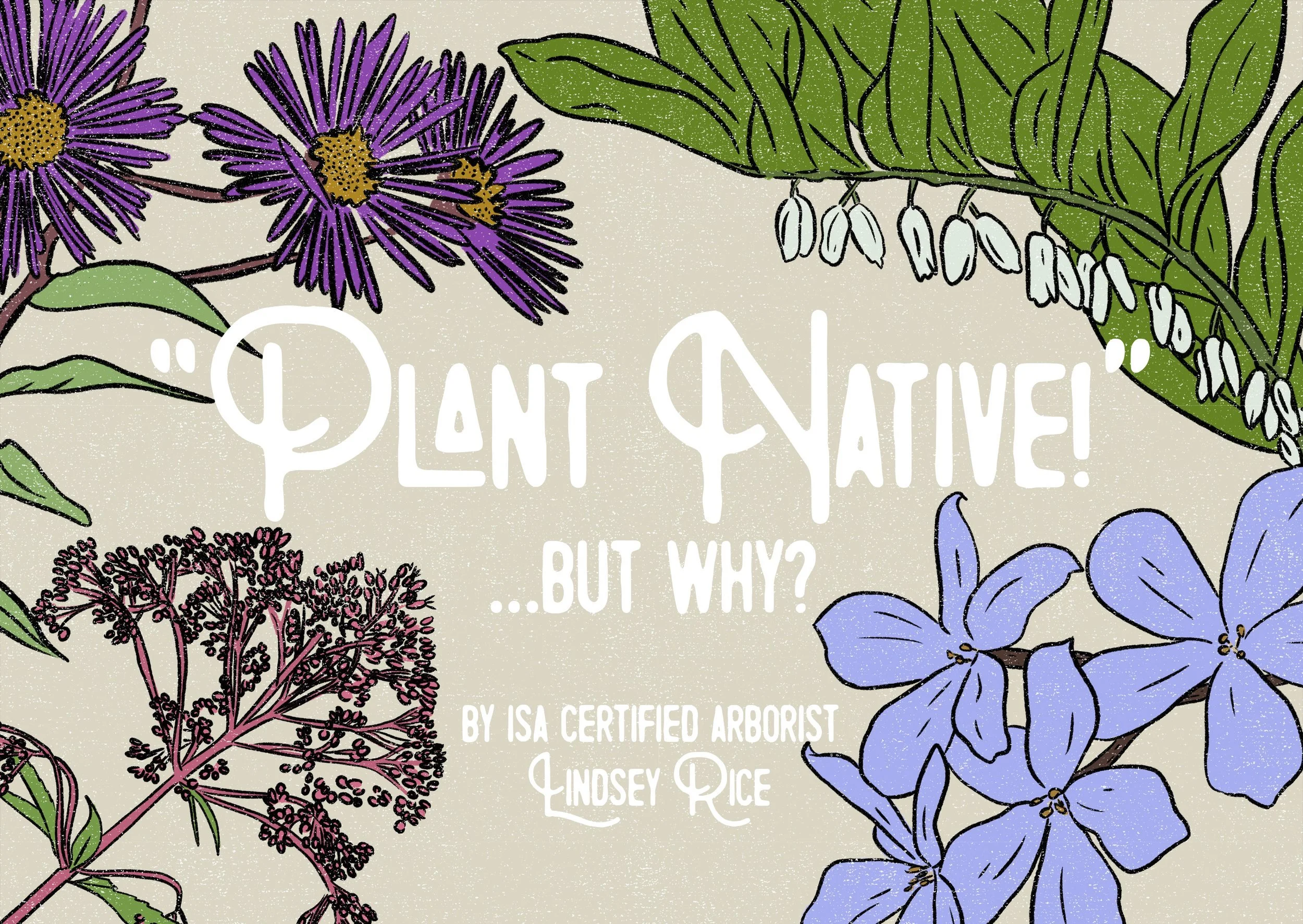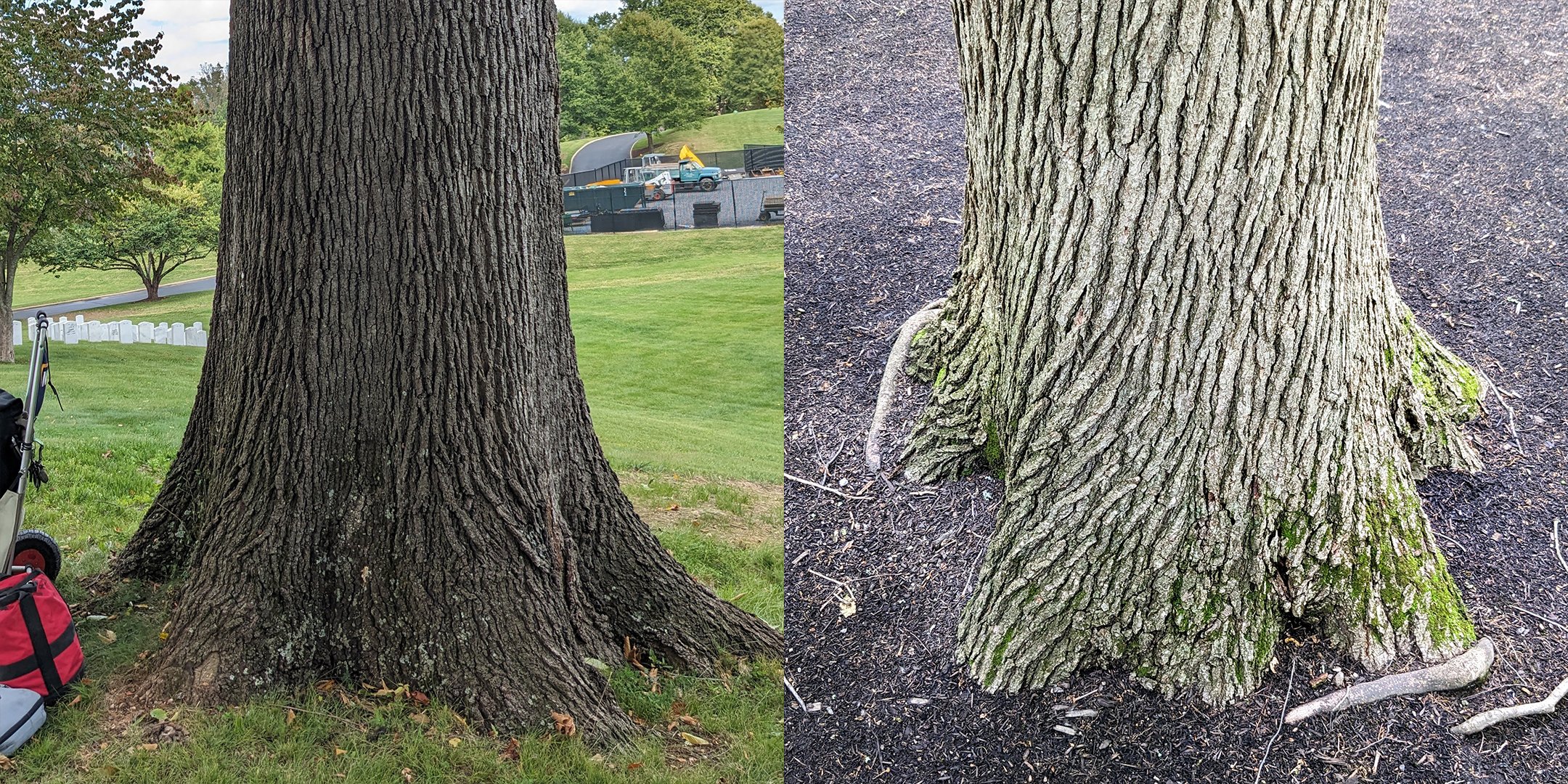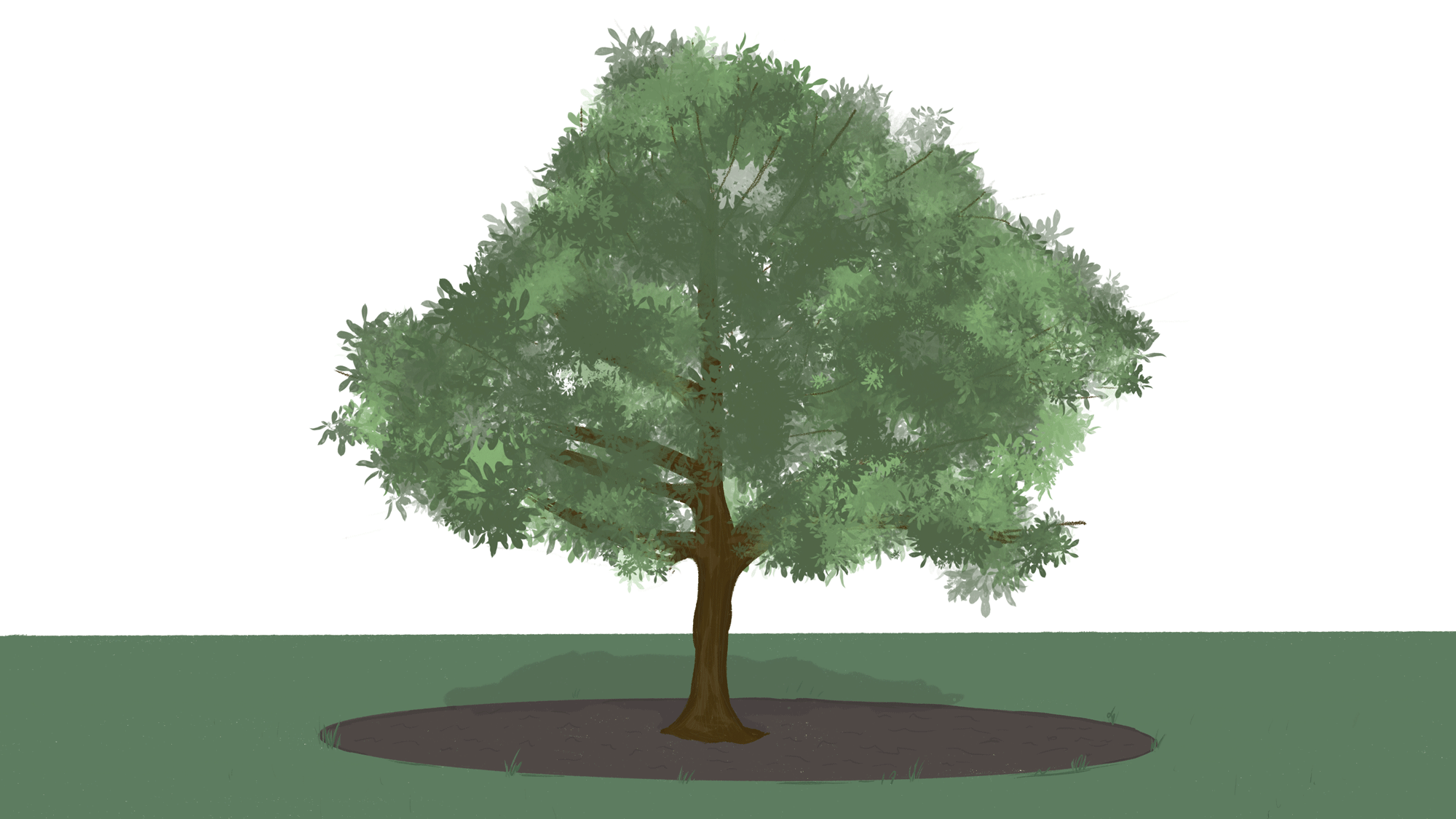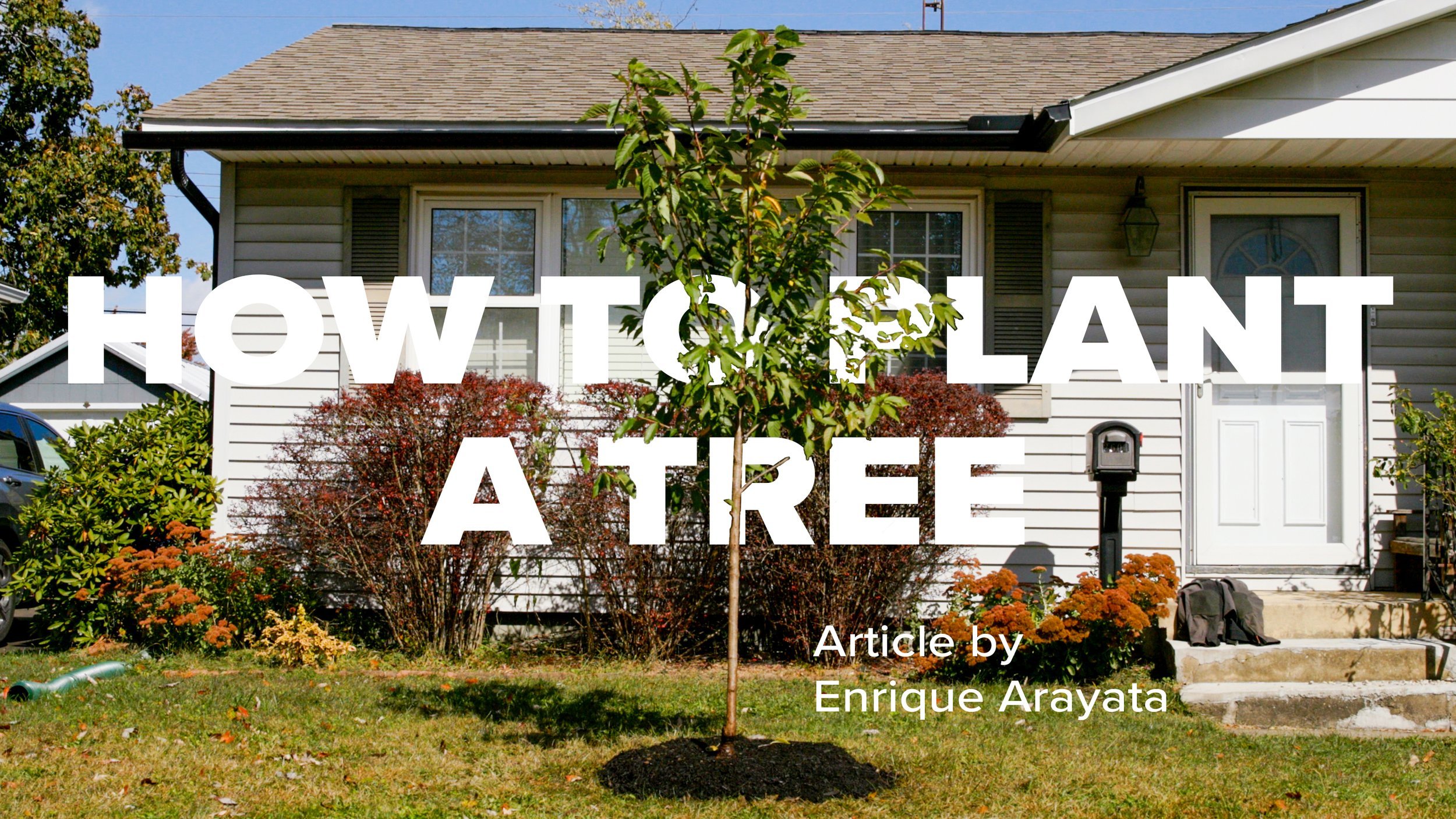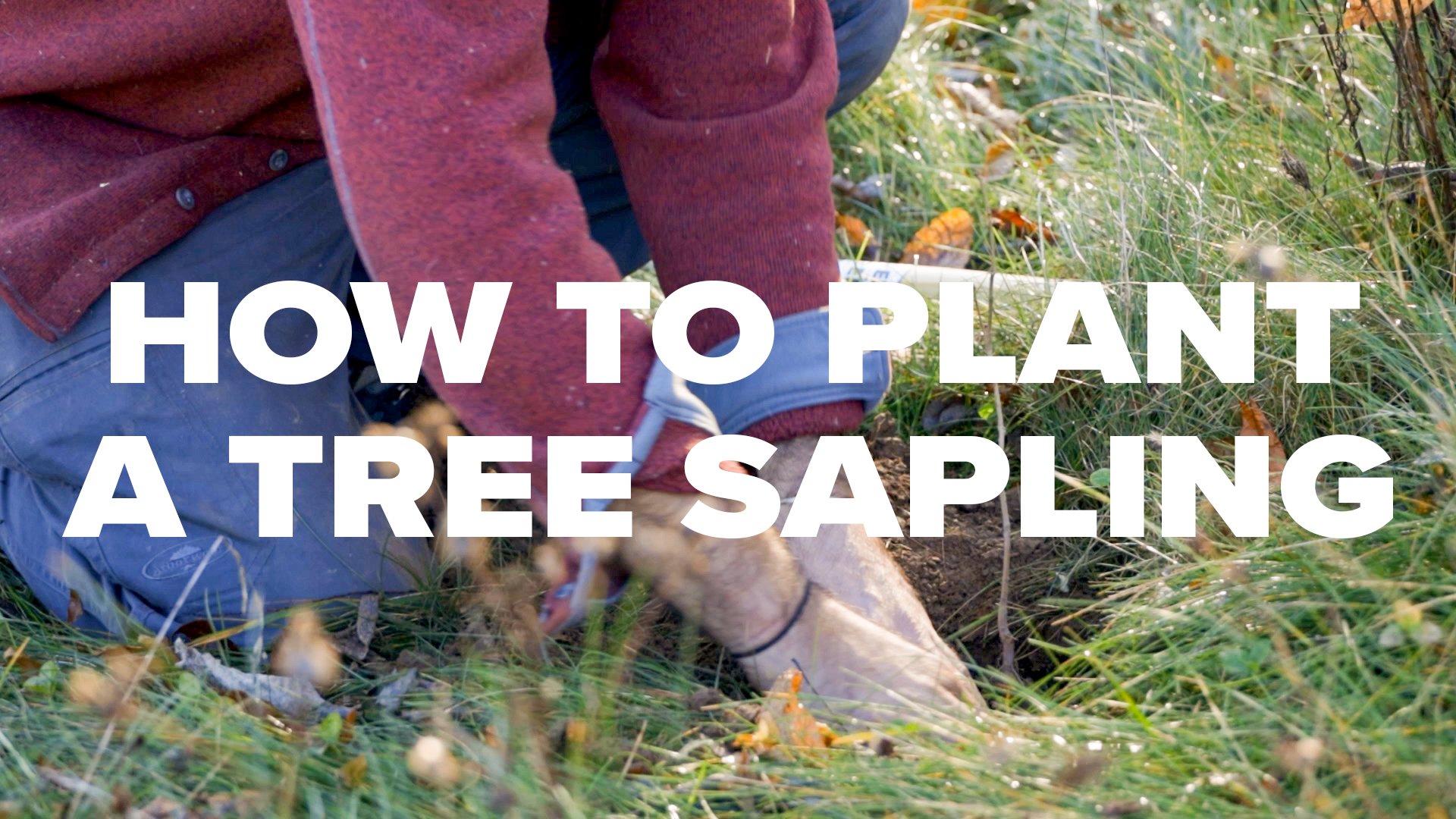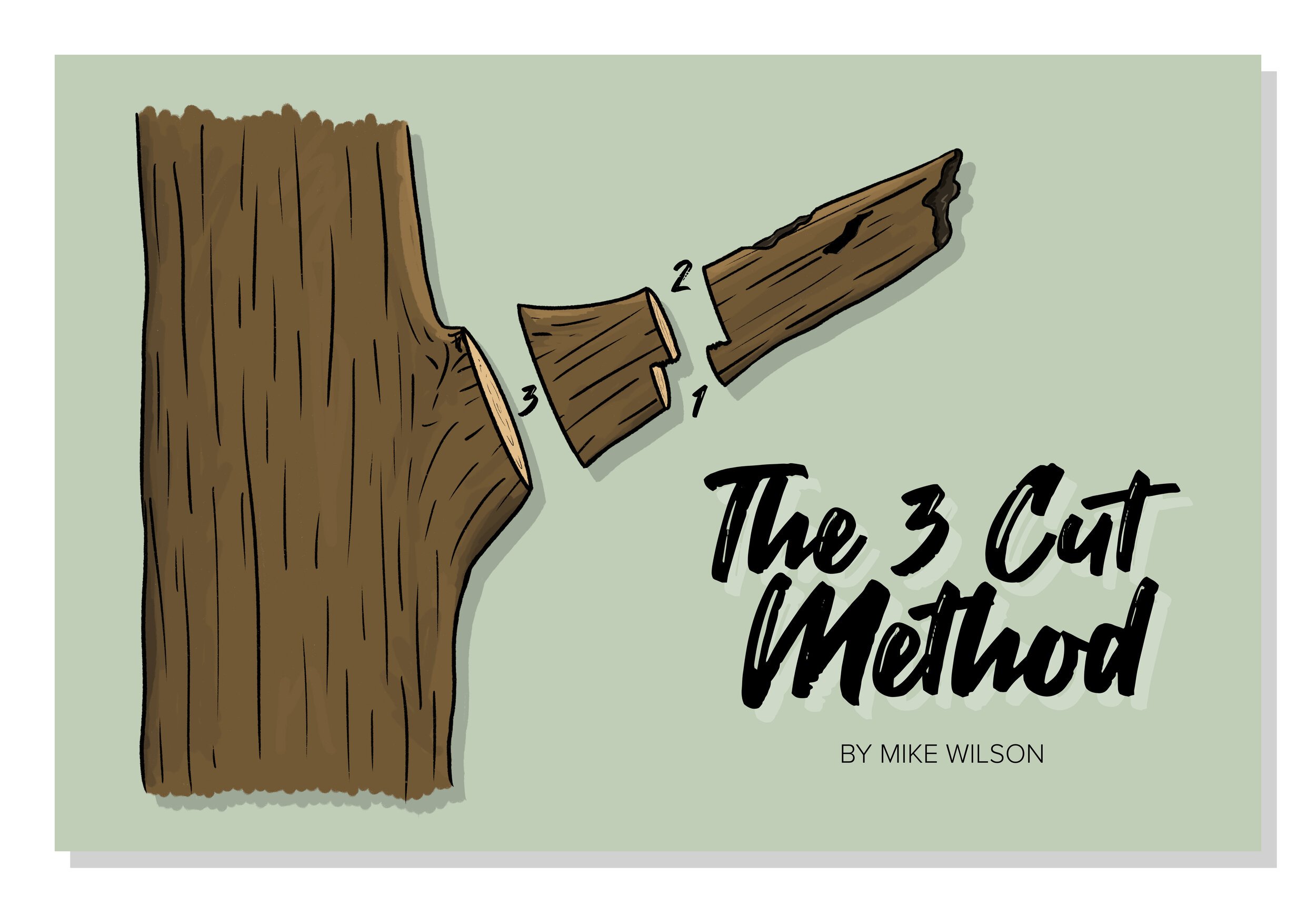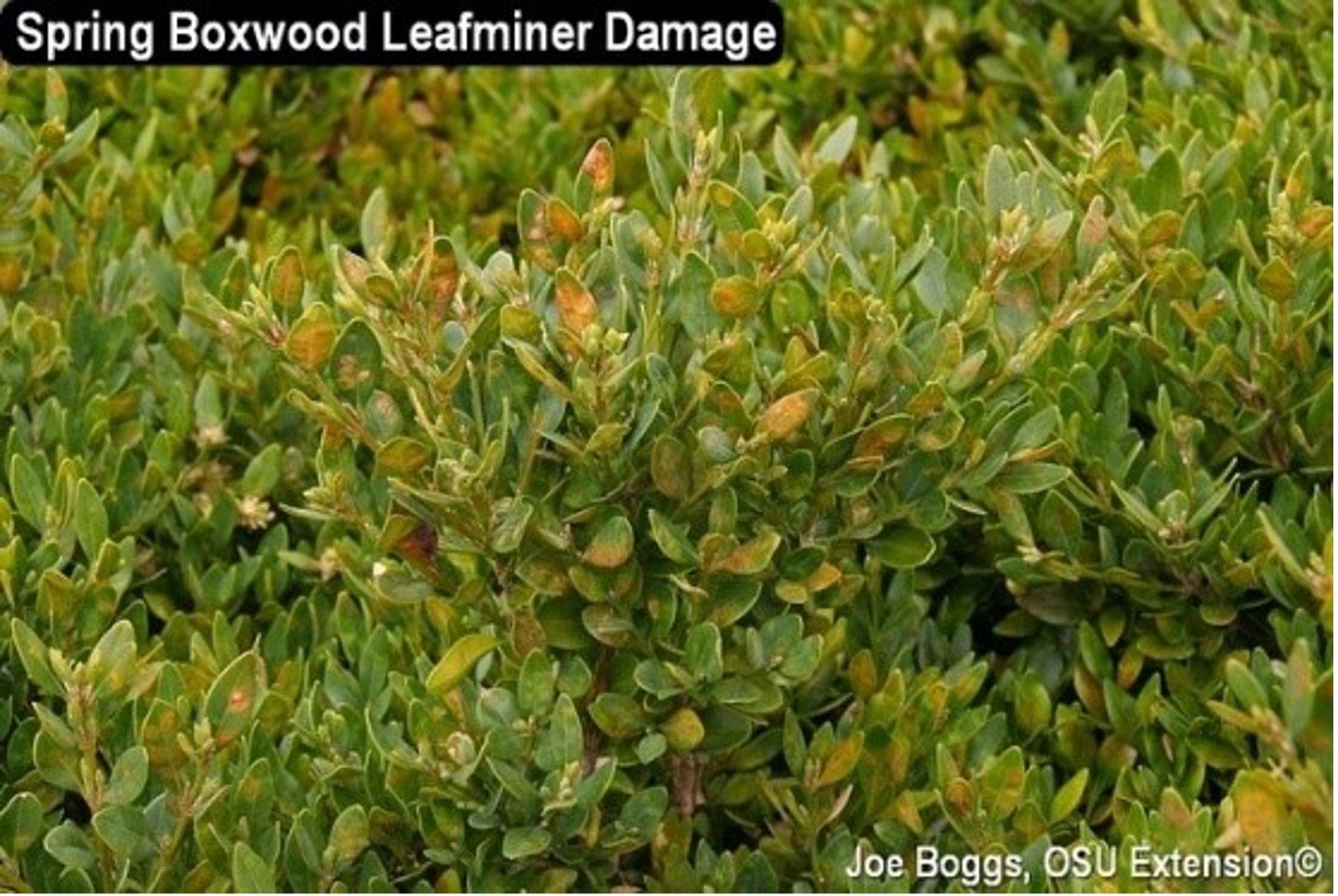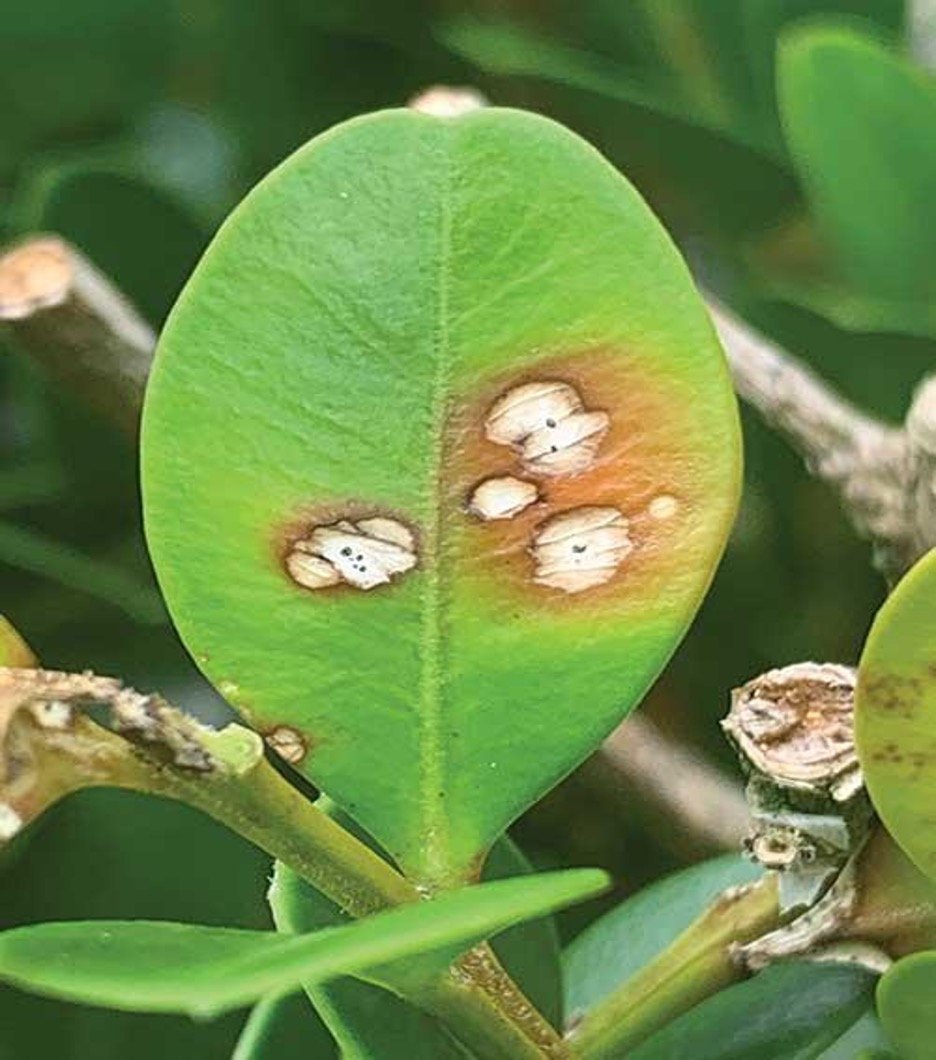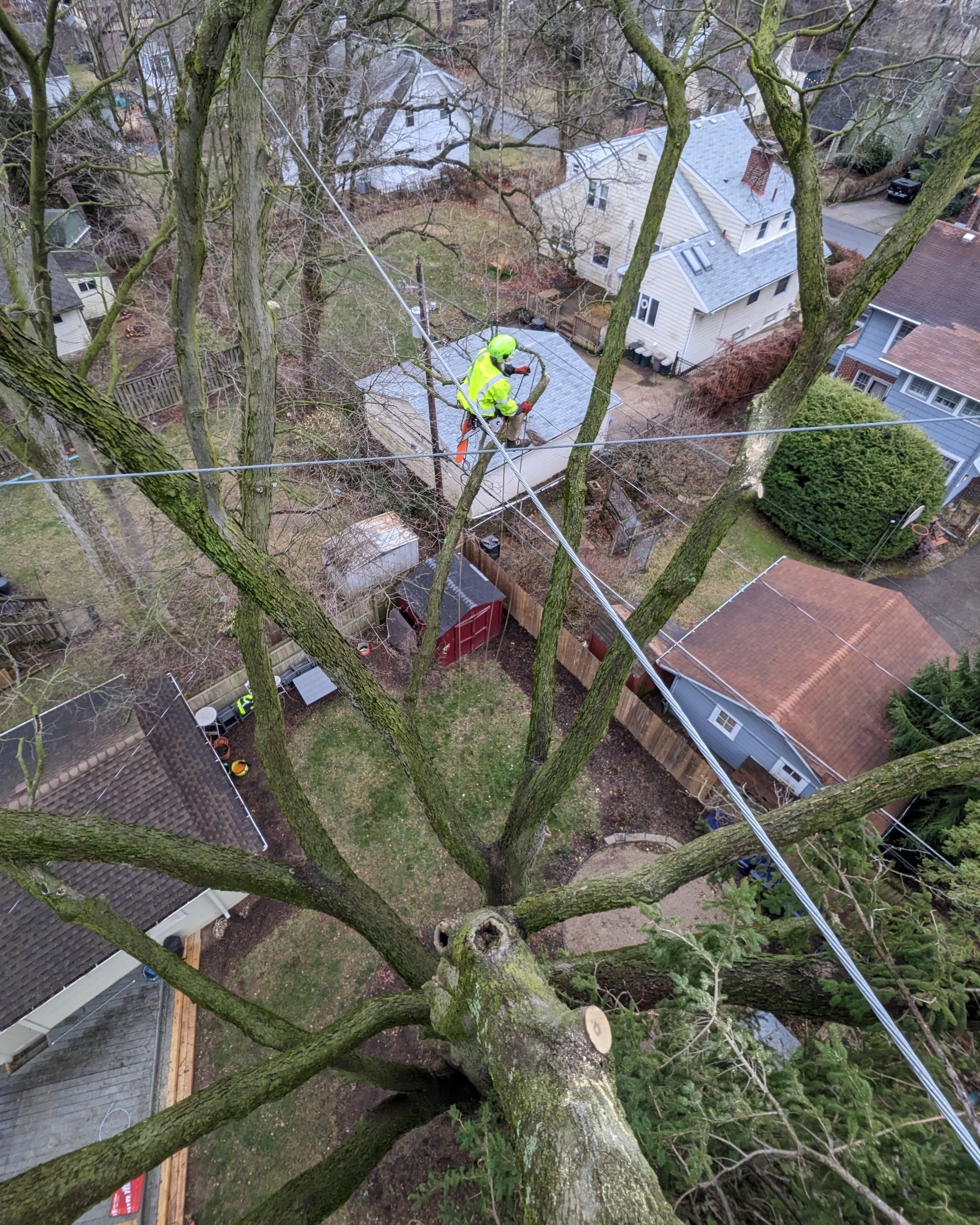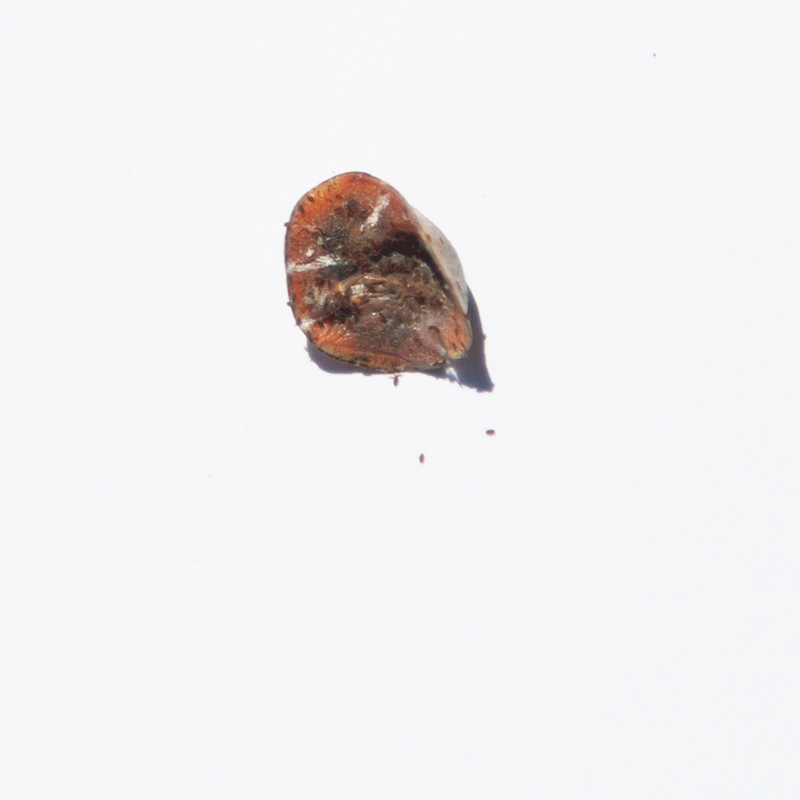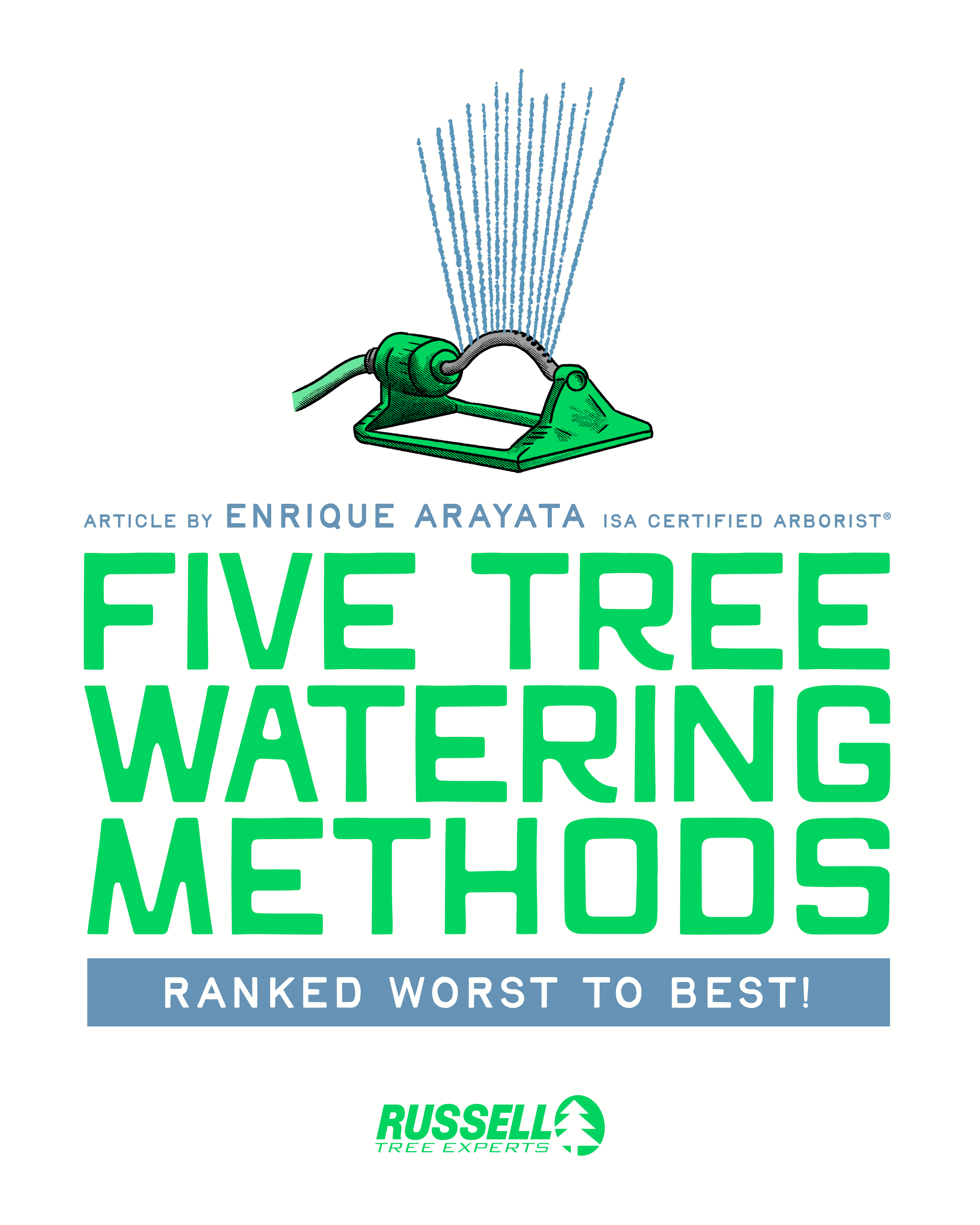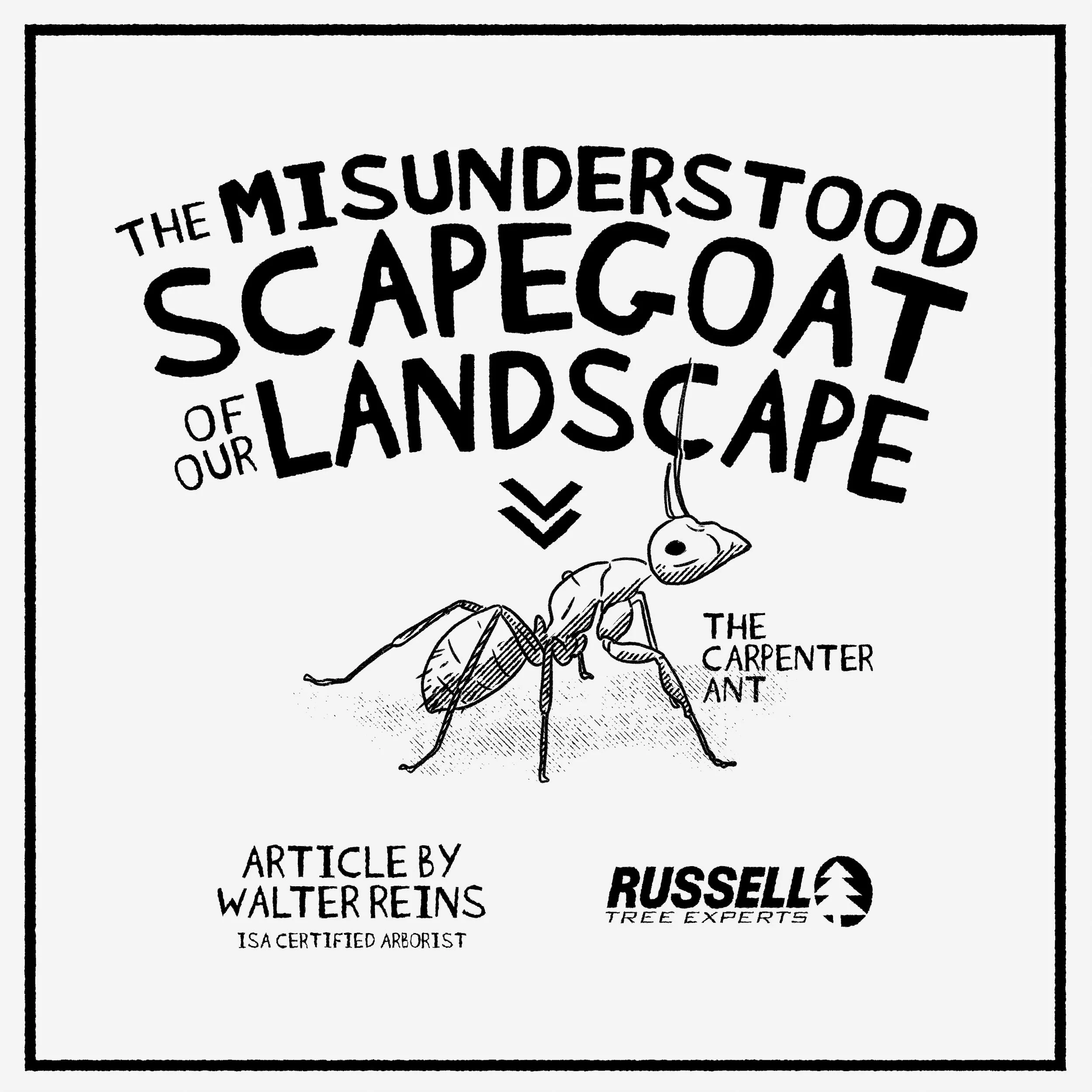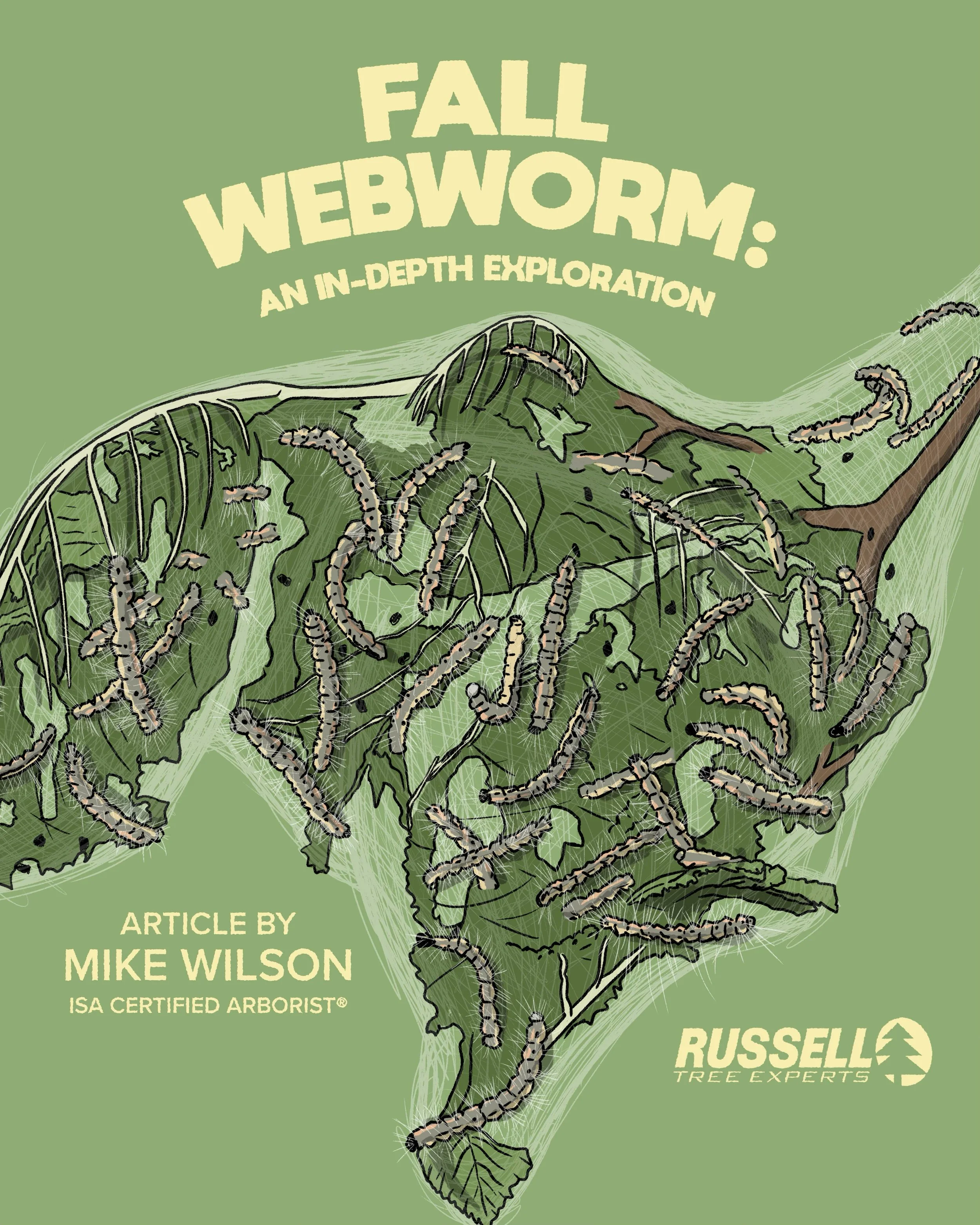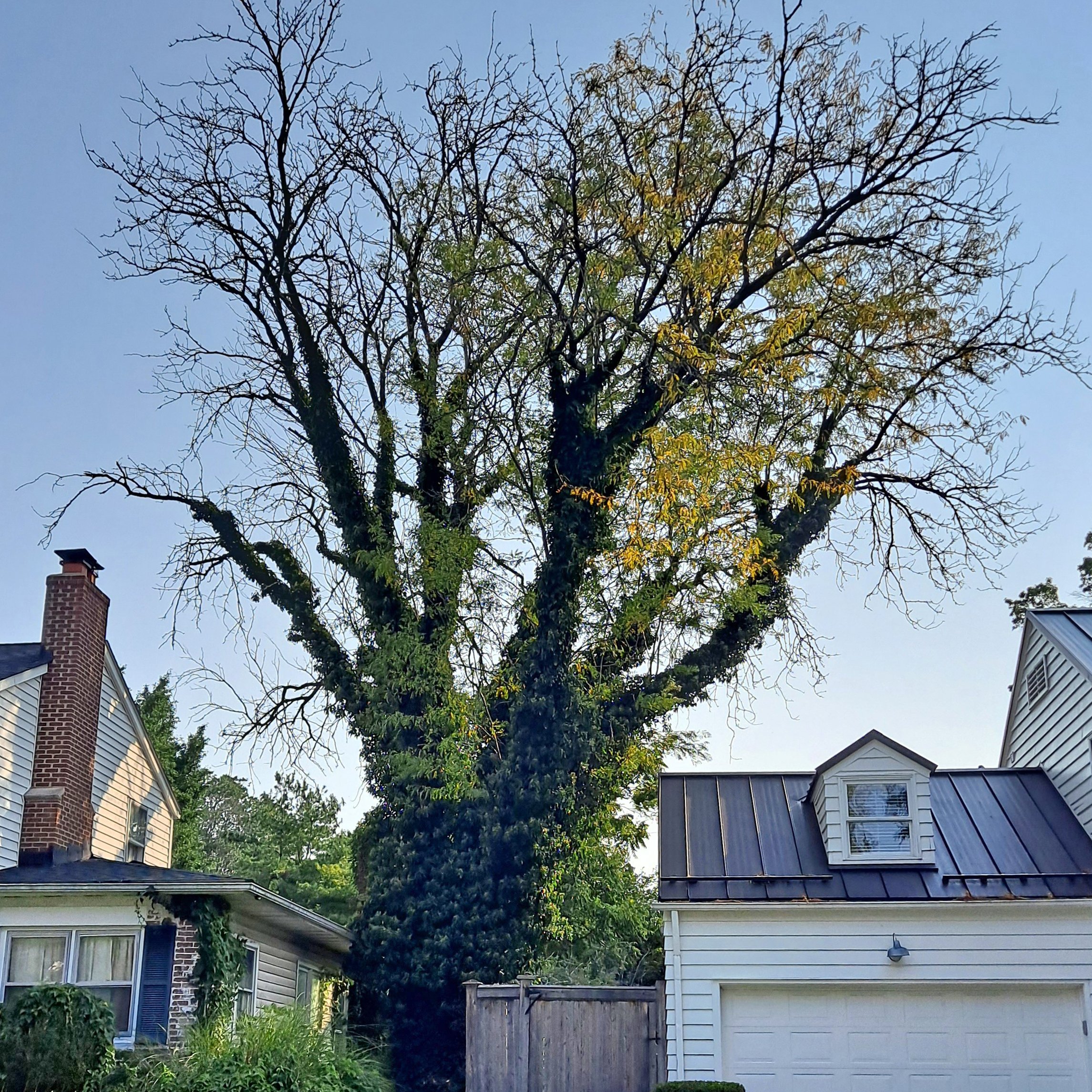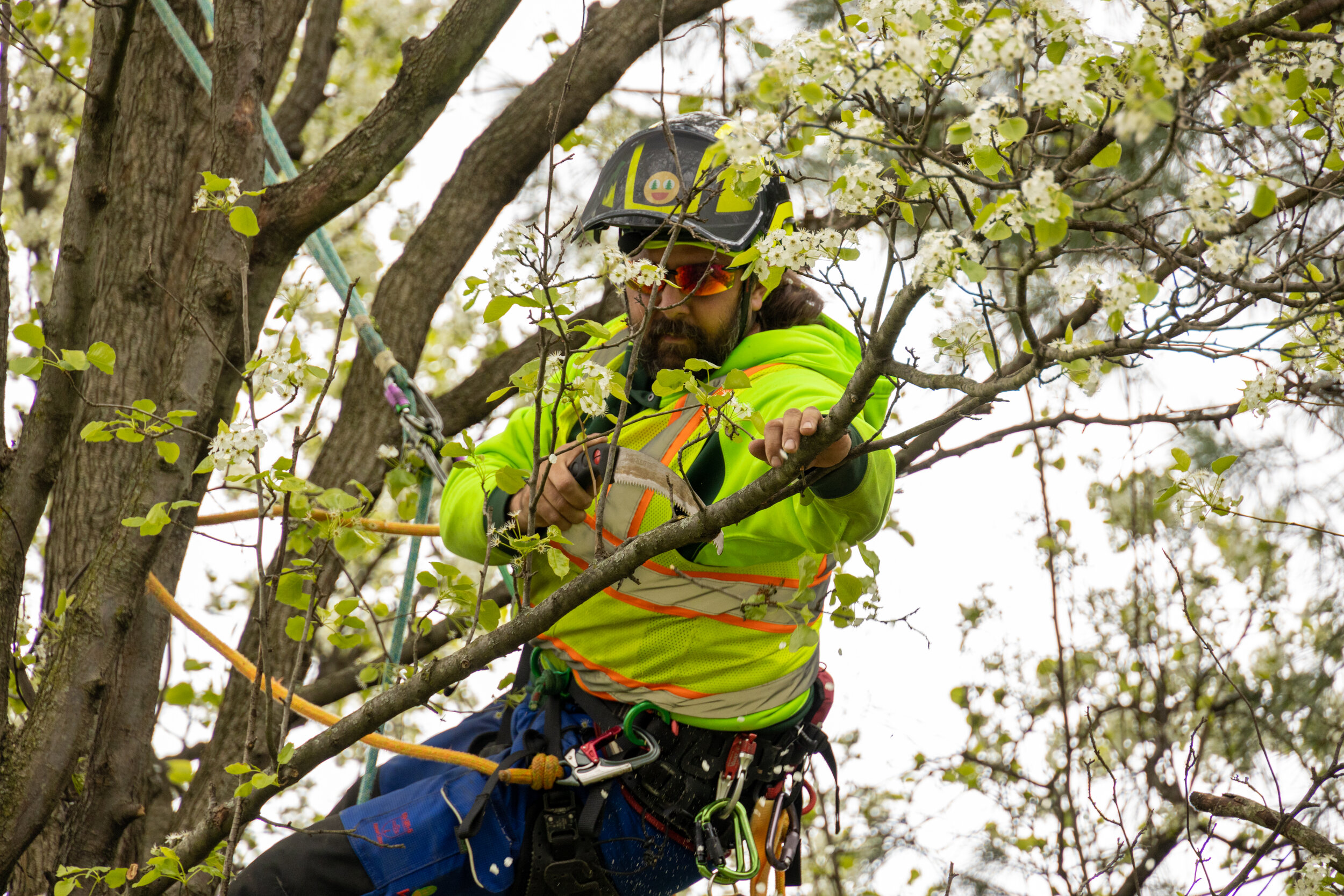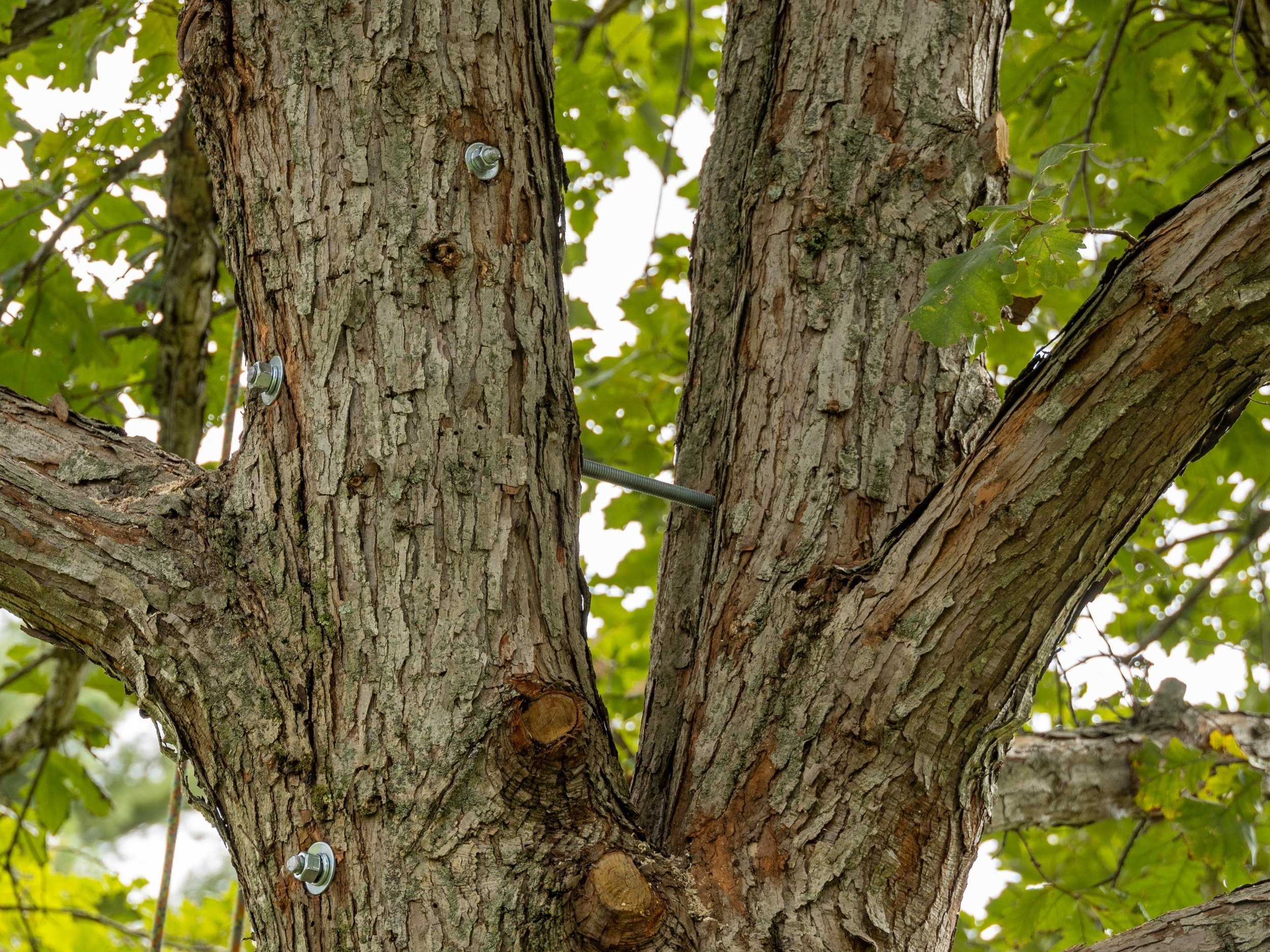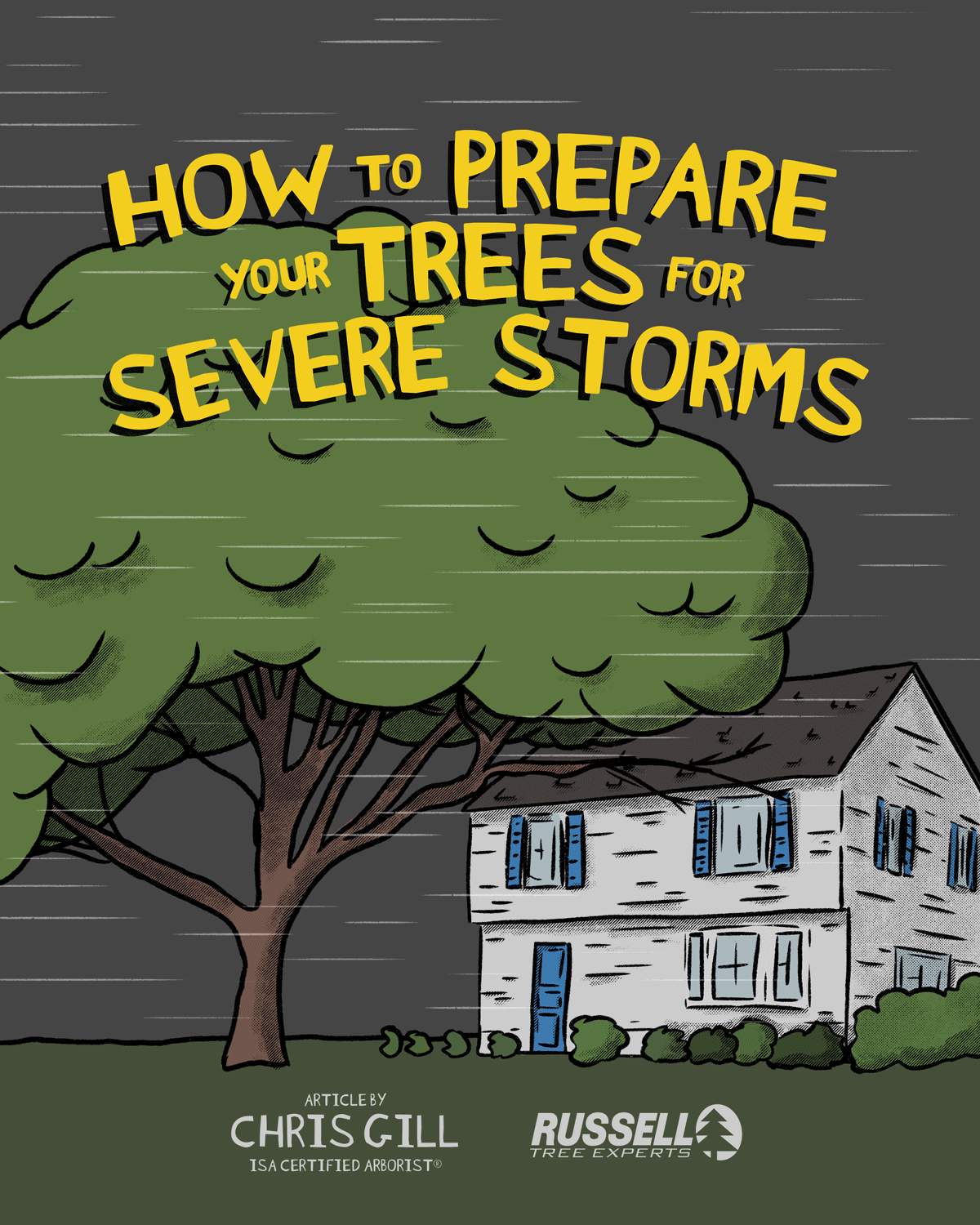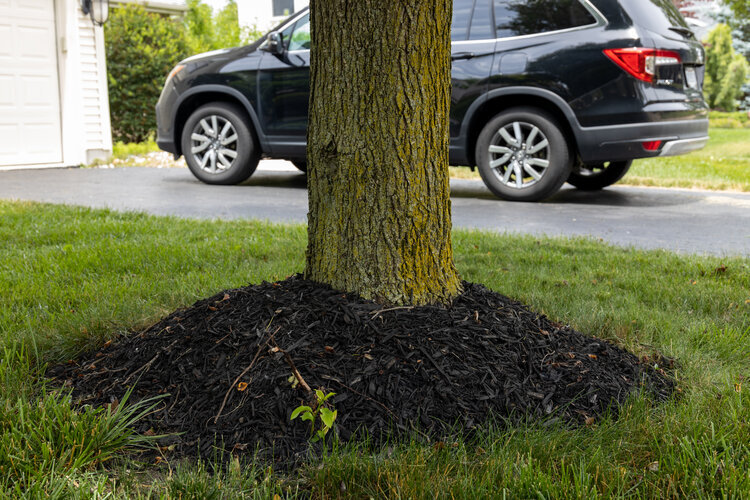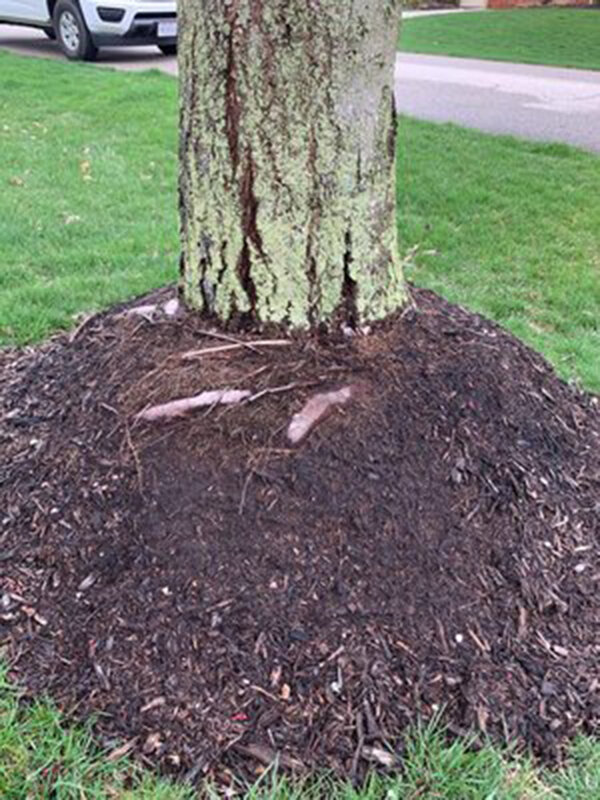By Mitch Lippencott
ISA Certified Arborist® OH-6715A
October 30, 2025
A tree is only as healthy as its roots. Luckily, Russell Tree Experts offers a variety of root-health services! The powerhouse of our root-health services is the air spade. This excavating tool, when attached to a powerful air compressor, is capable of removing soil without damaging tree roots. (Full disclosure and fun fact: air spading is my very favorite type of tree care to perform!)
Root Collar Excavation
“Say NO to Girdling Roots!”
The most common root-health service is root collar excavation. In this procedure, our technician begins at the tree's trunk and removes soil approximately a foot outwards to reveal the root system closest to the tree. From here, roots that are squeezing the trunk or each other can be selectively removed, thus improving the passage of water and nutrients from the roots to the leaves. Once the soil near the trunk is removed, additional improvements can be made such as removing twine, burlap, or other nursery products left during planting, or correcting the soil depth of trees planted too deep. In my experience, this is the single most beneficial process to long-term tree health. Maples and sweetgums are especially prone to girdling roots. Stem girdling roots are no good because they inhibit the flow of water and nutrients for a tree. Signs of trunk girdling in other trees include lack of flare at the base (which indicates the tree is planted too deep), flat spots in the otherwise round trunk, early fall color and leaf drop, and excessive stress during summer drought. Root collar excavations should be performed in winter when trees are dormant, but when the ground is not frozen.
In limited quantities, roots can also be exposed and pruned to prevent damage to patios, driveways, or underground utilities. This method of root removal is far less damaging to tree health than traditional shovel/backhoe techniques. An ISA Certified Arborist® should always be consulted before this type of work is performed because excessive root removal can cause instability and rapid tree death. Air spade trenching and root removal can be performed year-round except in the case of some trees that may be highly stressed or experiencing severe drought conditions.
Even when a tree is planted at the proper depth, has plenty of soil space, and with no girdling, the trunk can still benefit from root-health services. We offer three related, but progressively more intensive options to treat the entire root zone and not just the area around the trunk.
Vertical Mulching
Vertical Mulching
The first is vertical mulching, in which the technician removes soil in small bursts radiating outward from the trunk and extending the entire drip-line of the tree. The small but 8-12 inch deep cavities are then replaced with a porous and nutrient-rich compost blend. The result is a looser, more aerated soil structure for new roots and beneficial microorganisms to expand into. This service can be provided almost year-round (frozen ground/drought excluded) and is my go-to for mature trees on undisturbed sites that are beginning to lack vigor.
Radial Trenching
Radial Trenching
One step up, radial trenching is a similar procedure, but instead of small bursts, the soil is removed in continuous lines radiating outward the length of the canopy. I prefer this technique for new builds and areas with recent compaction, urban sites, and situations where old trees are beginning to decline. This is another almost year-round service.
Root zone Invigoration
The most extensive of entire root zone services we offer is root zone invigoration. In this technique, we use the air spade to remove all the grass, soil, or competing plants sitting on top of the tree's root system. We then correct any girdling and planting depth problems. Finally, we replace the entire space with our compost blend. This is a big, messy, expensive procedure but often the best solution when a valued small to medium-sized tree is being damaged by mowers, vandalism, or when there is an especially dense or aggressive plant growing above the root zone. I prefer this service to occur during winter dormancy, but in extreme cases, it can be performed any time roots are too restricted to function properly.
It’s easy to forget about your trees while they're sitting leafless in winter - but late fall and winter can be an incredibly opportune time to give them attention. Caring for your tree's roots is often more beneficial than pruning, spraying fungicides, or almost any other plant health care service. For a free tree work quote from one of our 25+ ISA Certified Arborists®, visit RussellTreeExperts.com/Quote or call us at (614) 895-7000!
Please note: This article was originally published on 1/29/2024 and was revised on 10/30/2025.
ADDITIONAL ARBOR ED™ ARTICLES!
Mitch Lippencott I Regional Manager, Russell Tree Experts
Mitchell Lippencott joined Russell Tree Experts in 2020 and has been in the green industry for over 20+ years with a diverse background ranging from working for a landscape design company, a retail garden center, and two municipalities! Mitch is an alum from The Ohio State University, a licensed pesticide applicator, a qualified tree risk assessor, and an ISA Certified Arborist®. Outside of work, he enjoys traveling, cooking, and gardening.

